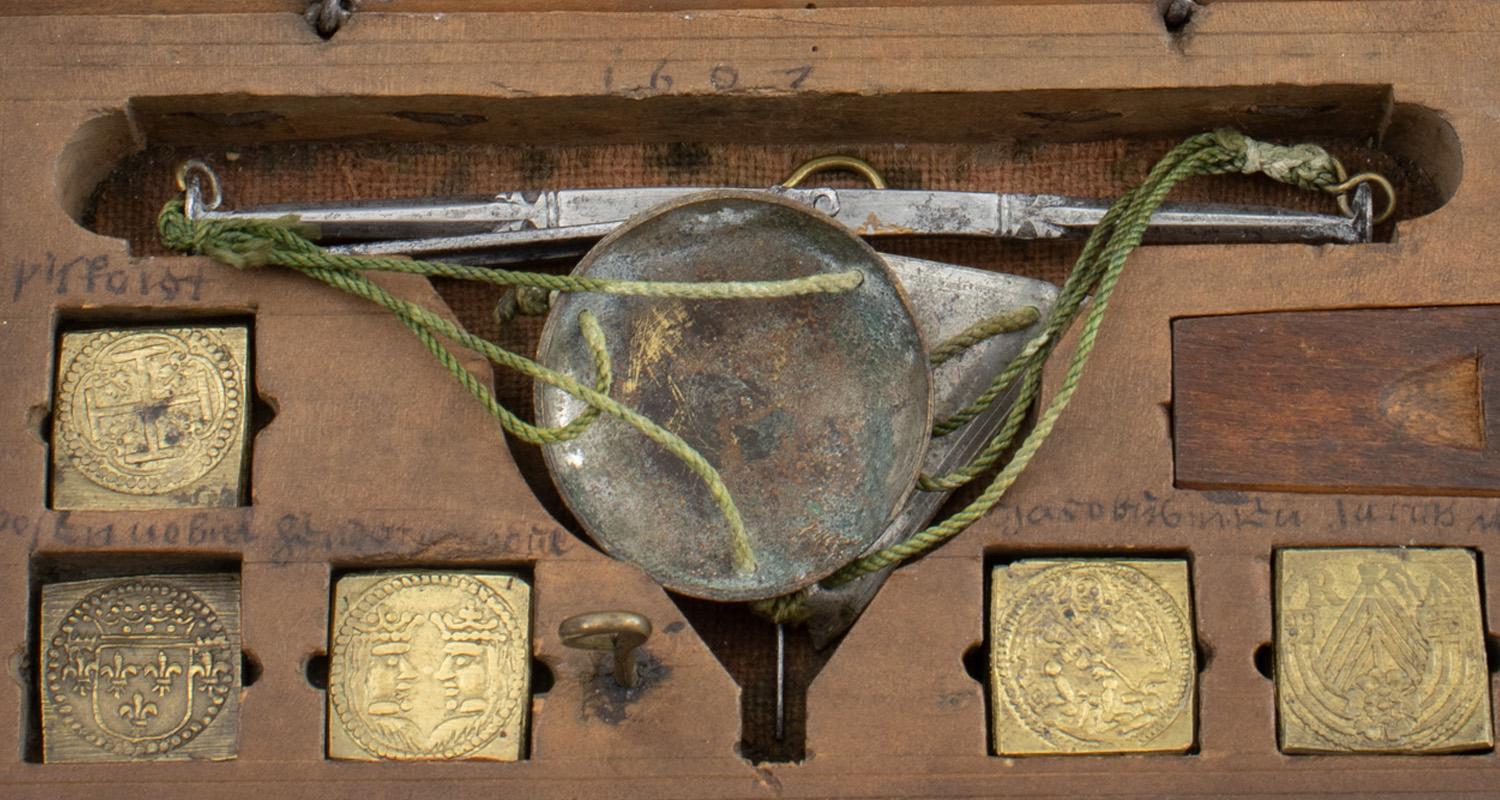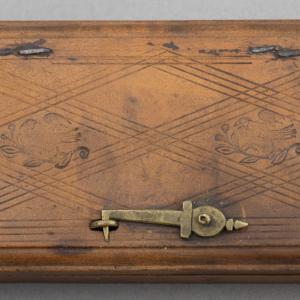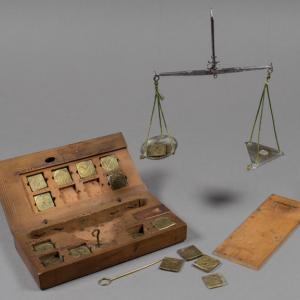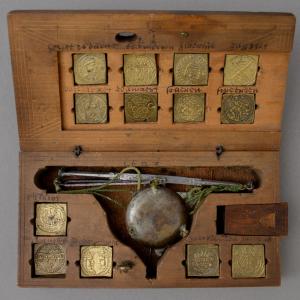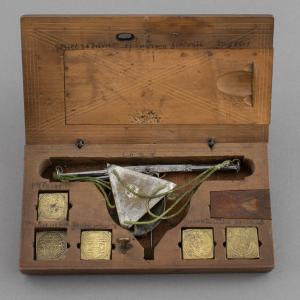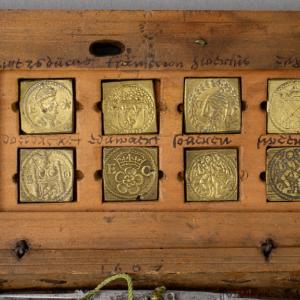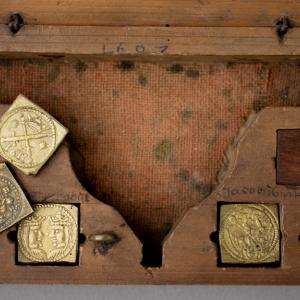We’re continuing our series of blogs to mark Edinburgh 900 . In this blog, Nico Tyack, Collections Information Officer at Museums & Galleries Edinburgh, explores the world of European commerce in the 1600s.
Progress in transport, the internet and a global economy has put most of us directly in touch with events and news from around the world. We can access news stories (true or false) as it happens, and often think that in the past, people lived more isolated lives, cut off from a wider world.
Looking through our museum stores recently I encountered an object in the collections which made me realise just how wrong we are to think this. This tiny item is a coin balance from the early 1600s and it tells a story of a web of international trade, money exchange and movement of news and ideas just as connected as today. It also reveals a sinister warning of famine, plague and war to come.
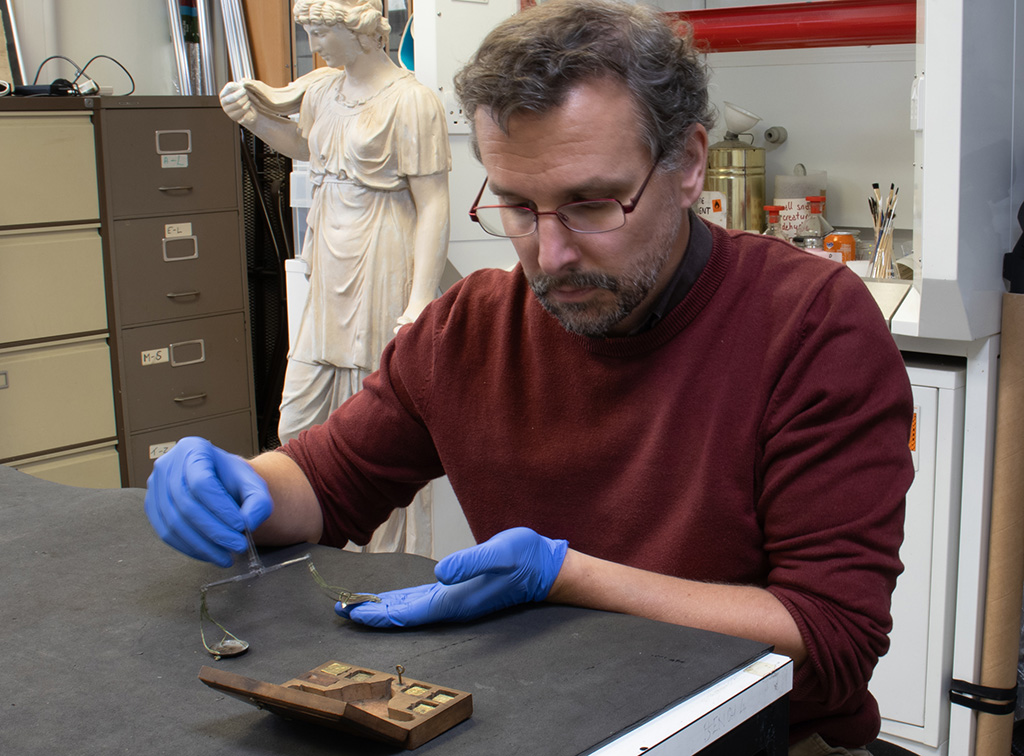
Meet the coin balance
Stored inside a simple wooden box, the coin balance is a handy kit that would have done an important job for a 17th century merchant. The balance itself is a set of scales made of steel and bronze. Two arms hang from a horizontal arm, on which is set a pointer. When the pans are equally balanced, the pointer lines up beautifully into a steel frame.
The box has a number of square holes for brass weights. Inside the lid is a cover which slides off to reveal 8 more spaces for weights. All the weights have the same design stamped on one side; a shield with the coat of arms of the Dutch province of Zeeland (now the southwestern-most region of the modern country of the Netherlands) and the initials I. D. C. The other side is a copy of the design of a specific gold coin in circulation at the time. The date "1607" is marked on the box in black ink, but the set was in use for many years after, and new weights were added as new coins were minted.
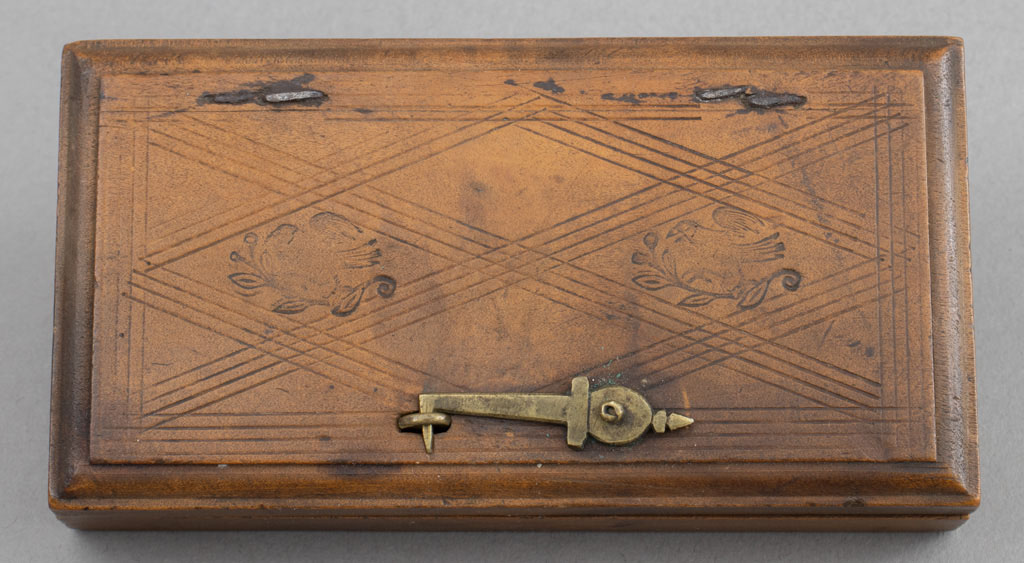
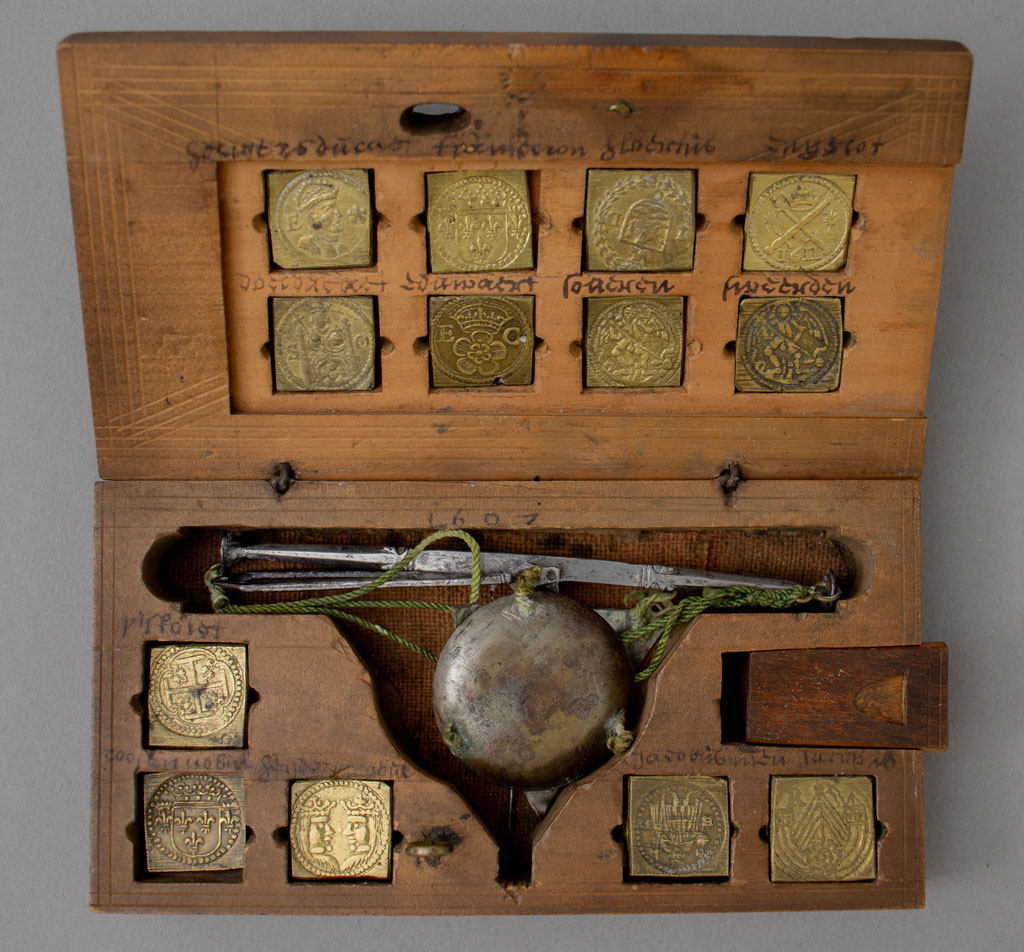
How did it work?
Unlike today, trade in the 1600s was not limited to the currency of the country you happened to be in; traders could buy with, and exchange, coins from other currencies. What mattered the most was the weight of the gold that made the coin.
By knowing the weight for any coin was correct, a trader knew they were being paid the right amount. Much like old style kitchen scales, the coin weights were made to match the exact weight of the coin they represented. The stamped design of the corresponding coin allowed the trader to easily find the weight he needed.
The weights in this particular set weighed coins in circulation around western Europe in the early 1600s. Some were much older, and had been in use for a long time already (such as one coin with the head of King Edward VI on it; this English king had died way back in 1553), while some were more recent (such as a coin of James VI of Scotland from 1611). They can tell us that the owner was accepting these coins as he travelled around Europe.
The coin weights we have been able to identify are from England, Scotland, France, Spain, one is possibly from Sweden, another may be Hungarian, and one is from the Spanish Netherlands; an area now part of Netherlands, Belgium and Luxembourg under contested control of Spain for much of early 1600s.
The name of many coins is written in ink above each of the slots for the weights. Sadly, many are very hard to make out today. But we can still make out some of the nicknames of the coins of the time; ‘pistolet’, a 2 escudos coin from Spain, and an ‘Albertin’, a coin from the Spanish Netherlands from 1606. Other coins are named by the monarch depicted; ‘Jacobus 6’ for the James VI.
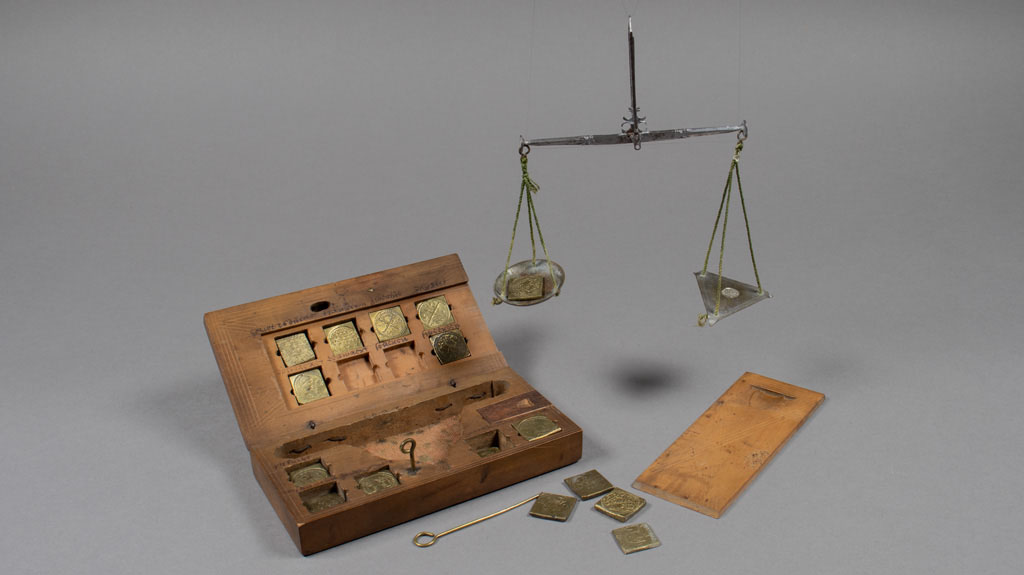
Who owned it?
The simple answer is ; we do not know! From the coat of arms of Zeeland on each weight, we can assume it belonged to a Dutch merchant. We can imagine him travelling around, and can see him in the streets of Edinburgh. We know he traded in Scottish money; one of the weights is for a Scottish coin likely minted in Edinburgh. Who did he meet when he was in town? Did he have a network of Scottish agents? What did he talk about in the taverns of the Old Town? Would we have seen him around the Mercat Cross and Lawnmarket? Are the initials I.D.C. on the weights a clue to his name?
A Connected Europe
The coin weights give us a snapshot of western Europe in the early 1600s. When the date 1607 was marked on the box, most countries represented in the weights were enjoying a time of relative peace. France had just come out of a half century of civil and religious wars, the crowns of Scotland and England had just been united with the succession of James VI of Scotland as King James I of England. Spain and the Netherlands were about to call a 12 year truce, both reduced by a violent struggle that had exhausted both.
This was a good time to be a trader in north-west Europe. Business was booming, and the inclusion of what may be coins from Sweden and Hungary show the extent of the networks of the owner of the balance. Merchants worked in multiple currencies, but as they went about their business, they were exchanging so much more than just money and goods. As they travelled around Europe, they brought with them news from abroad, new ideas, new books and texts. For the expanding merchant and educated classes, this was a time of exciting change, technological and social progress fuelled by an economy which was truly global (within the context of the time).
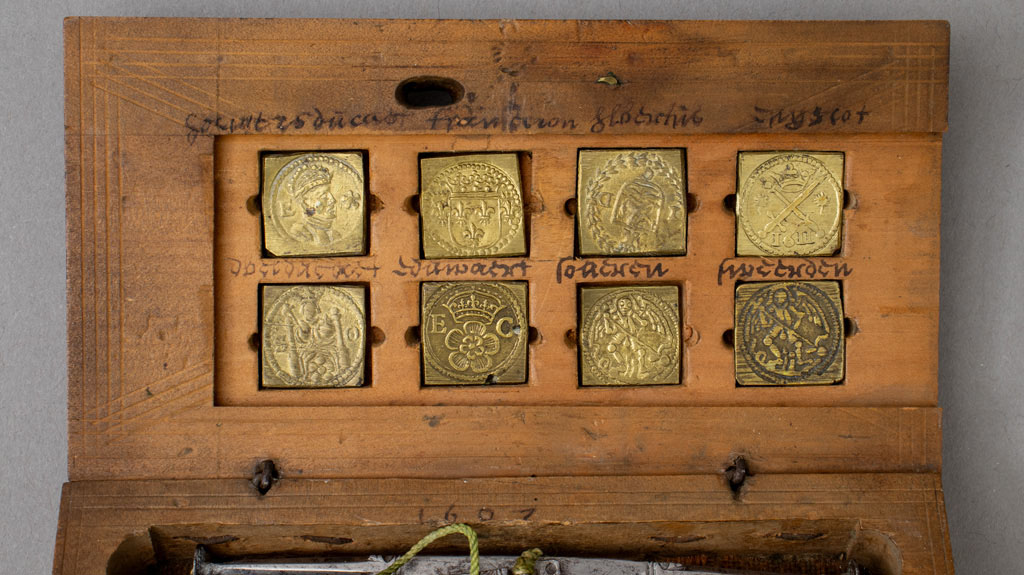
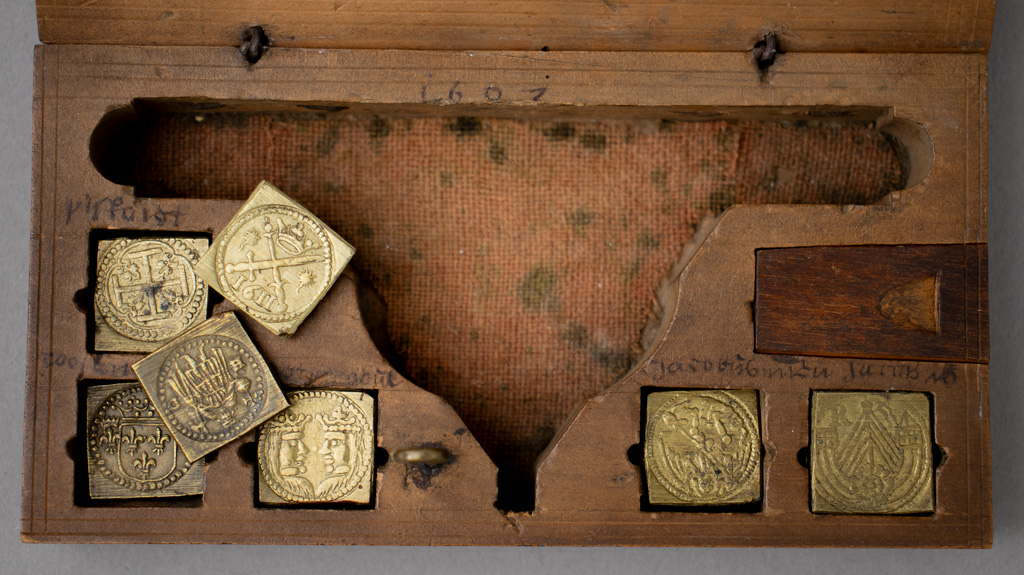
Europe at war
The coin balance has one last, darker secret to share. Shortly after the names of each coin had been so carefully marked on the box, the countries of Europe were plunged into the bloody, devastating Thirty Years’ War. Many countries the owner had traded in were now at war with each other. Truces had ended, old wounds had opened and millions died, mainly through famine and plague brought on bad harvest, war and a collapsing economy. Our merchant may have found himself locked out of some of his previous markets, a citizen of an enemy state. Did his business suffer? What happened to him?
When the clouds finally parted in 1648 with the Peace of Westphalia, they revealed a very different Europe. The population was decimated, and the wars and their resolution had redrawn the political map. Spain was forced to recognise the independence of the Dutch Republic, the grip of the once supreme Habsburg Empire had all but vanished, and Europe had a new super power in the form of the all-powerful and absolutist Louis XIV. In Britain, the old order had been swept away with a decade of civil war. The execution of Charles I and abolition of the monarchy was only a few months away. In this new era, we are left wondering if the little brass weights in our merchant’s scales box still had relevance and use?
Edinburgh 900
2024 marks the 900th anniversary of King David I introducing a new system of local government into Scotland, and making Edinburgh a royal burgh. To mark this anniversary, we're exploring the different ways the city museums' collections can tell Edinburgh's story. We'll be following the 10 themes of the programme, so keep an eye out for new blogs as we discover more. You can hear more about some of the items in these blogs in the Edinburgh 900 lecture series at the City Art Centre.
